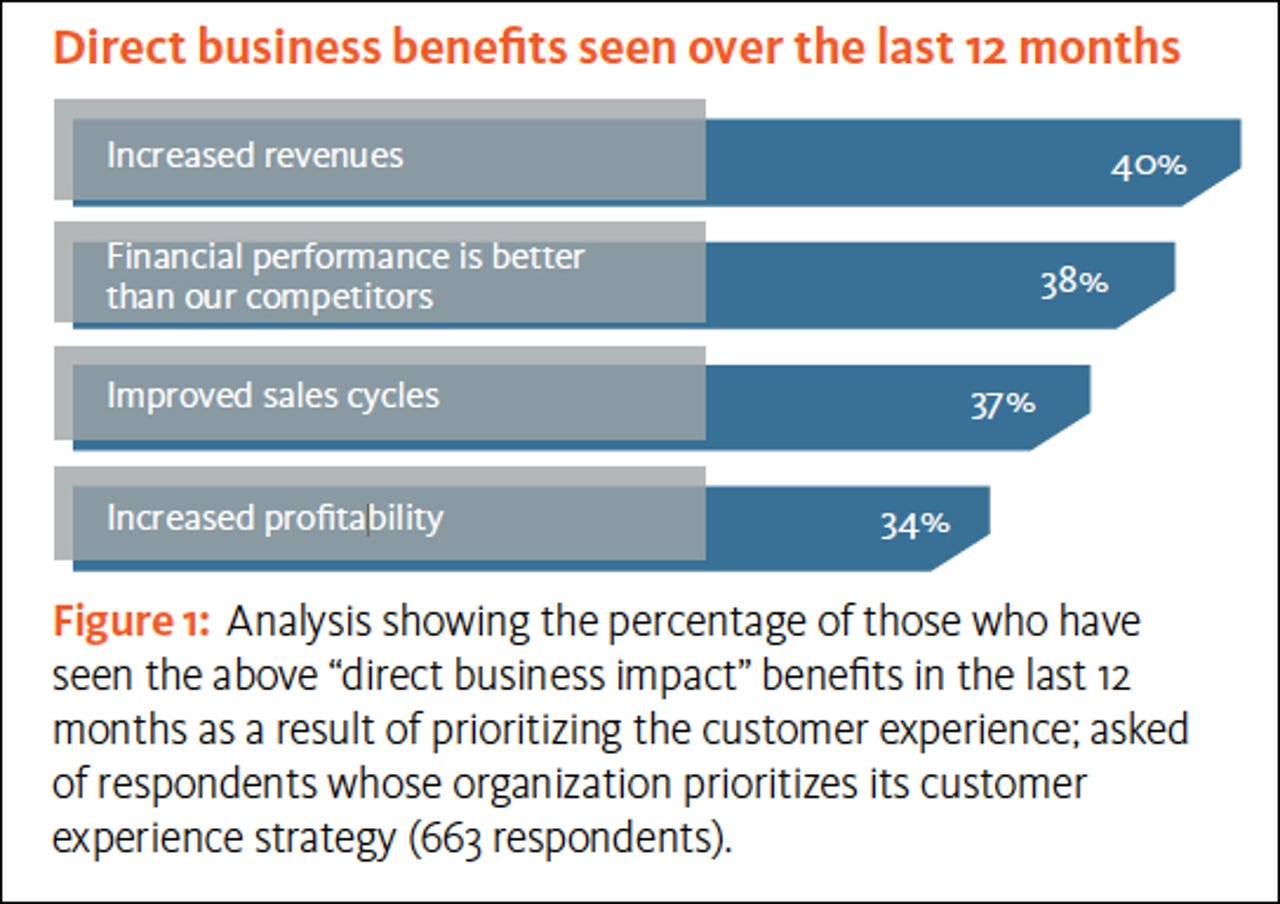CIO workshop: ROI of customer experience

Customer experience is one of those vague phrases that one hears about digital transformation (itself one of the most common jargon buzzwords of our time). There are two issues associated with customer experience: determining the meaning and quantifying the value or ROI.
To understand the meaning, let's turn to two authoritative sources, Dion Hinchcliffe and Paul Greenberg, both of whom are fellow columnists for ZDNet.
Dion Hinchcliffe positions customer experience as part of what he calls "digital experience management:"
digital experience management attempts to provide a framework -- along with supporting processes and platforms -- that allows us to better and more systematically organize and manage all of these touchpoints. A subset of digital experience, customer experience management (CEM), is getting most of the focus today since the customer audience is both the largest and most significant in terms of generating revenue for businesses, consequently getting the most attention and priority.
Paul Greenberg talks about engagement as a point of evolution beyond customer experience alone:
So let's take that back to why my definition of customer engagement? I repeat it here.
"The ongoing interactions between company and customer offered by the company, chosen by the customer."
To explain.
- If the interactions aren't bidirectional (between company and customer) they aren't interactions
- If they aren't ongoing then the customer is not engaged for more than a moment, and thus the company has failed at keeping that customer involved.
- Offered by the company - the company has to be able to provide the customer what they want to have.
- Chosen by the customer
In summary, customer experience drives how that customer perceives a brand, which directly affects their loyalty, purchases over time, and referrals (or warnings) to potential buyers. When customer experience turns into engagement, all those benefits become even stronger.
Despite the intuitive benefit of creating positive experiences for customers, many organizations struggle with allocating resources in this domain. These teams need proof that investments in customer experience will yield tangible results. Despite the intuitive benefit of creating positive experiences for customers, many organizations struggle with allocating resources in this domain. These organizations need proof that investments in customer experience will yield tangible results.
Professional services firm Avanade and marketing platform developer, Sitecore, recently participated in commissioning a study to show the business value of customer experience. The results were precisely in line with what we would expect: investments in customer experience do yield an ROI.
Some of the key findings include:
- US $3 return on investment expected for every $1 invested in customer experience
- Almost six in ten (58%) have seen increased customer satisfaction over the last 12 months
- Close to four in ten (37%) have seen improved sales cycles
The graph below summarizes business benefits from customer experience, including higher revenue, greater profitability, and faster sales cycles.

Customer experience ROI
This chart shows the benefits of improving customer experience. Of course, measures such as customer loyalty and retention quickly translate into higher revenue.
Loyalty and other customer experience benefits
In this research, respondents described their reasons to focus on customer experience, including being more competitive, responding to customer feedback, and lowering operational costs.
Reasons to improve customer experience
The obstacles, or challenges, associated with improving customer experience include outdated technology and lack of qualified personnel and skills.
Challenges to customer experience
Consistent with the results described so far, respondents focused on revenue and profitability as the main reasons to improve relationships with their customers.
Lifetime benefits of customer experience
What this means for the CIO
From a CIO perspective, we can draw several conclusions:
Improving customer experience is crucial. The value of customer experience should be obvious, but sometimes we need to hear the same message again. In this day and age, can anyone seriously question the importance of developing relationships with customers that lead to engagement?
Technology matters. Doing this right requires a range of tools, from social listening to personalization. Therefore, the CIO and IT have an important role to play.
It's more than technology. Although technology is important, improving customer experience requires a mindset and cultural shift. It's really about recognizing that customers are central to all business success. For the CIO, this means getting on board and helping lead the charge.
Customer experience initiatives are one of those pivotal activities that require a coordinated technology and business strategy. Therefore, it presents an ideal opportunity for CIOs to participate at both the tech and business levels.
Disclosure: Avanade is a CXOTALK partner.